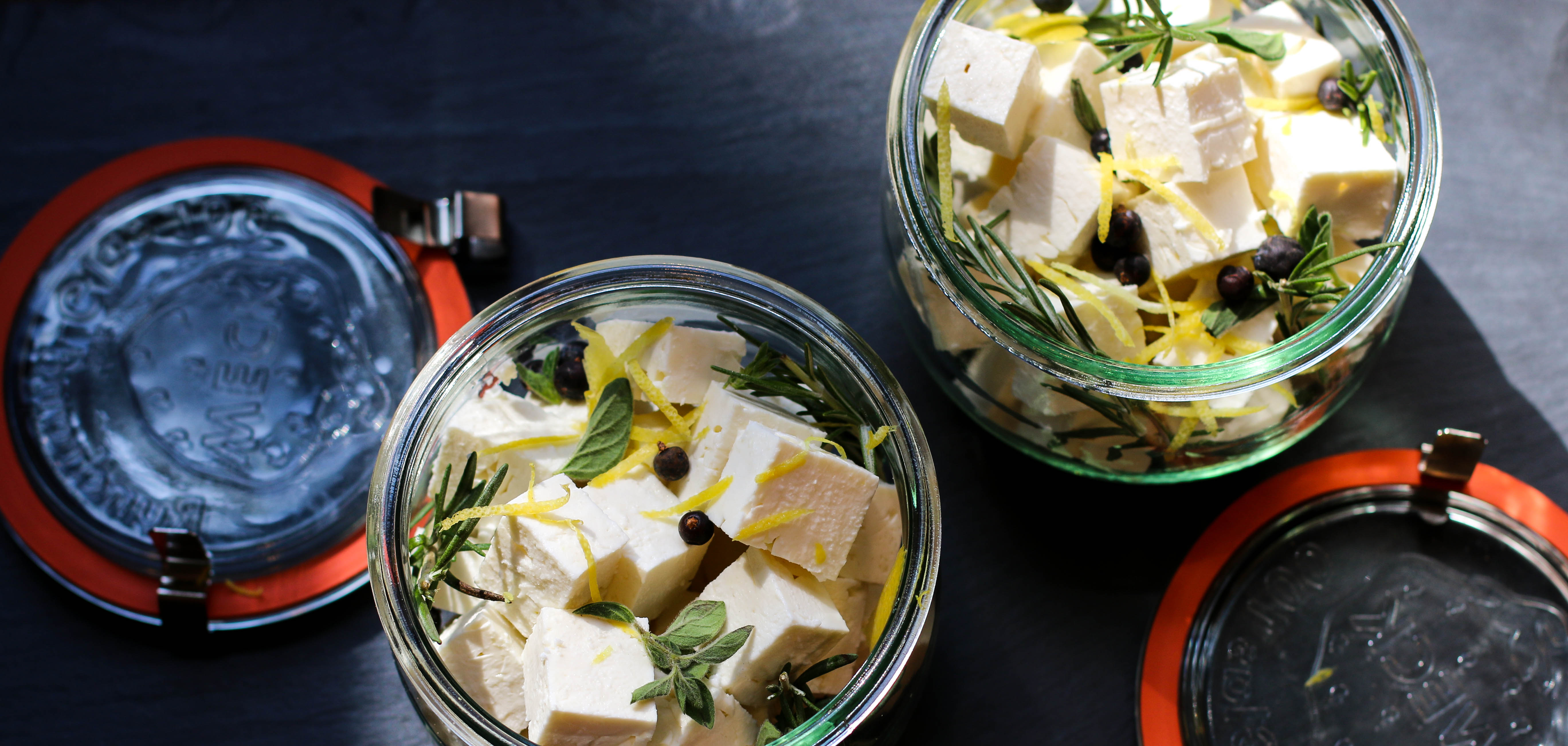Red Cabbage Sauerkraut with Apple & Clove

I love sauerkraut, and this is one of my seasonal favorites. The red cabbage, apples, cloves, and black pepper lend it color and warm fall flavors. Homemade sauerkraut is easier than you think, and it is incomparable to the stuff you can buy in the grocery. For a longer discussion of fermentation technique and background, check out our Homemade Sauerkraut With Juniper And Caraway. For this batch I used a beautiful stoneware crock made by our good friend Colin Dyck at Mudslide Stoneware. These traditional European-style crocks are both gorgeous and practical, including a water-lock for fuss-free fermentation. For my all-time favorite use of sauerkraut, check out our Reuben Sandwich.
Yield: about 3 quarts
Ingredients:
- 7 pounds red cabbage, coarsely shredded
- 3 tart apples, cored and shredded
- 3.5 tablespoons pickling salt
- 1/2 tablespoon whole cloves
- 1/2 tablespoon whole black peppercorns
Steps:
- Add sliced/shredded cabbage and apples to your fermentation vessel. For this batch we used a beautiful handmade crock from our friend at Mudslide Stoneware. You can use any non-reactive food-safe container that is taller than it is wide, and easy to clean and cover. Don't use metal...it could easily rust in the acidic and salty brine. Make sure the fermentation vessel is totally clean and dry before starting.
- Add the salt and spices, and with clean hands firmly squeeze and mix it into the cabbage and apple mixture. This is hard physical work. You are working the salt into the cabbage, and creating the natural brine in which the sauerkraut ferments. When your cabbage is dripping wet, you are almost done. You are finished when you can press the cabbage below the surface of the liquid by at least a 1/2 inch. Be patient, this mixing, kneading, squeezing, and wringing can take 5-10 minutes.
- You will need a weight to keep the fermenting cabbage below the surface of the brine as it ferments. If your crock comes with its own weights, that is perfect. You can also use a 1 gallon zip-top bag filled with water or a heavy plate. Your choice of weight will depend on the shape and size of your crock. Any cabbage pieces above the liquid are vulnerable to spoilage...which both looks and tastes bad, so the weight should fit relatively tightly and be heavy enough to keep the cabbage submerged.
- Cover the whole crock with a loose fitting lid or tea towel. Allow the crock to sit until the next day.
- Each day during fermentation you will do three things: push down the weight to release the many carbon dioxide bubbles that will have formed as the kraut ferments; use a spoon to skim off any bits of cabbage (and foam) that have floated to the surface; and taste the kraut. The sauerkraut is perfectly safe to eat at each stage in fermentation, and it is helpful to see how the flavor and texture develop. If you like your kraut milder and crisper, ferment it less. If you like it tangier and/or softer, ferment a little longer. The perfect fermentation, is the one you enjoy eating the most.
- When the kraut stops making carbon dioxide bubbles, it is likely done fermenting. In normal room temperatures (about 65 degrees) this is likely around 7 days. Taste the kraut each day along the way. When it is just the way you like it, it is time to stop fermentation.
- This step has many options, depending on how quickly you will use the kraut. If you want to keep it 6+ months, then I would recommend heat canning it. This kills the microorganisms, and provides for longer shelf-life. There are many places to find easy to follow instructions on heat canning. The cons of this approach are: it kills the microorganisms which have health benefits; it flattens the flavor; and it softens the kraut. Our preferred method is to use canning jars, a vacuum sealed lid system, and store in the refrigerator until use. The vacuum and cold temperature halts fermentation and allows it to keep for up to 3 months. You can also just put the kraut into jars, screw on a lid and refrigerate. It will likely stay good at least 1-2 months.
Paul Shetler Fast








